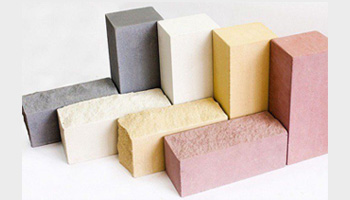What is Silica Sand?
Silica Sand is typically a form of Silicon dioxide (SiO2), made up of two main elements – silica and oxygen.
The most common form of Silicon dioxide is quartz, which is a chemically inert and hard mineral, broke down into tiny granules over time through the wind and water called Silica Sand.
It is also known as White sand, Quartz sand and Industrial sand, that comes with a wide range of shades, mostly white or colourless. The colour of the sand depends chiefly on the rock detritus and a variety of minerals that make up the resource.
It is obtained by the quartz materials from the sources like beach dunes and processes them into different types and grades of sand, and then supplied to different industries for various applications.
Silica sand possesses some criteria that it must contain, at least 95% silicon dioxide and equal to 0.6 % iron oxide, if not it is considered as regular sand.
What makes Silica sand Different from Other Sands?
Other sands refer here to regular sand or normal construction sand, which are typically brown and used for concrete applications. These also contain some silica but up to only 80% along with other minerals like iron, potassium, carbonate and other trace elements.

The presence of these minerals makes the sand regular and darker colour compared to silica sand. The normal sand (non-silica sand) available in various shades such as pink, black and green depends on the sand deposit on different geological places.
Uses of Silica Sand
Silica sand is valued for several useful properties. It owns high melting point and low thermal expansion coefficient, which makes it a good choice for applications that involve high-temperature exposures.
Here are some examples of silica sand uses in different sectors.
1. Glass
Silica sand is a primary component in the manufacturing of glass. It is a very important raw material for standard and special glasses. The chemical purity of silica sand is the principal determinant of strength, colour and clarity.

It is used to produce flat glass for building and automotive uses and for container glass that stores food and beverages. It reinforces glass fibres and required for the production of fibreglass insulation. It is applied in speciality glasses that include test tubes, scientific tools, television and CRT monitors, and also in incandescent and fluorescent lamps.
2. Sports Fields and Golf Courses
On synthetic sports fields and golf courses, silica sand is used for bunkers and greens. Because of its ability to support and natural plant growth, it is also used to maintain greens and fairways.

The natural grained shape provides the required permeability and helps to facilitate day to day maintenance like root aeration and fertilization.
3. Calcium silicate bricks
For manufacturing calcium silicate bricks, silica sand is mixed with high calcium lime with a sand to lime ratio of 10 or 20. These bricks contain good regularity, smooth faces, and sharp corners with a wide variety of strength.

The durability of calcium silicate bricks is similar to concrete and is not resistant to sulphur- containing environments. Know more about Types of Bricks in Construction.
4. Water Filtration
Silica sand is an effective filtration bed in the removal of contaminants in both processing of wastewater and in the filtration of the drinking water.
Silica sand neutralizes the acidic elements to maintain optimal pH balance in water filters. As it is chemically inert, it will not react when exposed to acids, contaminants, volatile organics or solvents.
5. Metal Casting & Production
Silica sand is an essential part of the production of steel, ferrous and non-ferrous foundry industries for de-oxidation and grain refinement.

For obtaining desired internal or external shapes, metal parts are cast in silica sand. It is a preferred choice for castings that involve cast iron, steel, titanium and also used to clean the casting surfaces.
6. Paints & Coatings
Silica sand constitutes of high-performance properties such as brightness, reflectance, oil absorption and colour-consistency. These properties help to improve the overall appearance and durability of industrial and architectural paints and coatings.

Its low oil absorption nature improves finishing colour that makes a durable coating rich in pigments. Silica fillers improve tint retention and also provide resistance to dirt, mildew, weathering and cracking.
7. Construction
It is the primary component in a variety of building and construction products. For improved durability and structural integrity, whole grain silica is used in flooring, mortars, specialty cement, roofing shingles, asphalt mixtures, skid-resistant surfaces and in other industrial materials. It performs as a functional extender to add durability, anti-corrosion and weathering properties in sealants, caulks, epoxy-based compounds.
8. Ceramics & Refractory’s
For all types of ceramic products such as tableware, floor tiles, wall tiles, sanitary ware and other, it is an essential component for the glazing and body formulations.

9. Industrial Abrasives
Due to its round and angular varieties, it is commonly used as a mineral abrasive for industrial blasting. Silica sand helps in making the round surfaces smooth, used in sandblasting with using some resins that prevent from health hazards caused by silica dust.
10. Other Applications
In Oil and Natural gas recovery process, silica sand is used known as frac sand. It is pumped down holes in the deep well applications to increase the flow rate of oil or natural oil and its chemical purity helps to resist chemical attacks in anti-corrosive environments.

Silica sand has a wide range of uses in various industries, so before going for it, check the grade and buy from a reputable manufacturer to avoid sand with impurities. for more details visit:
silica sand, what is silica sand, silica sand uses, uses of silica sand, Silica Sand in India

